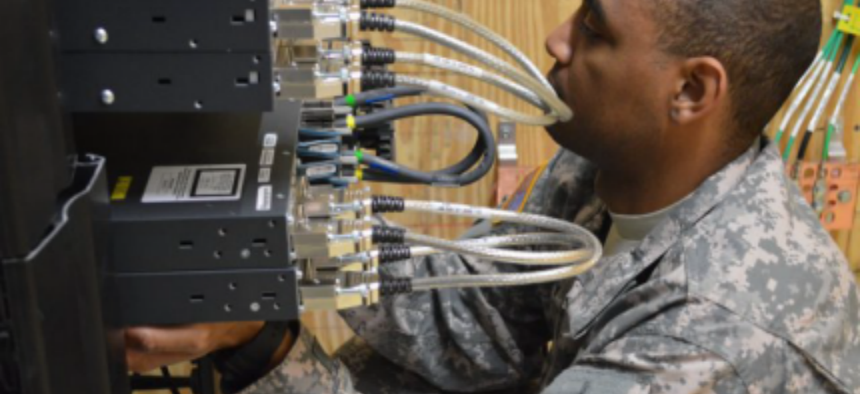
JRSS moving to cloud, Windows 10
Pentagon’s Joint Regional Security Stacks is on track to reduce the physical footprint of DOD servers.
The Pentagon’s Joint Regional Security Stacks will increasingly use cloud technology and move to more off-the-shelf technology such as Windows 10, according to former DOD Chief Information Officer Terry Halvorsen.
Just prior to his departure, Halvorsen said technological migration to “state of the art street technology” will increasingly be used to ingest data throughout all DOD networks.
He said JRSS is on track to reduce the physical footprint of servers and -- that it will support cloud technology structures.
While the CIO’s departure leaves some questions regarding the future trajectory of the JRSS effort, Halvorsen thinks migration to commercial systems will endure.
“It’s the first time we have done all this with completely off-the-shelf equipment. That’s a big culture change that I think will sustain,” said Halvorsen.
This development, Halvorsen emphasized, will allow cyber professionals to better monitor what is flowing through networks in terms of both content and volume. The effort will enable a collection of servers and security tools that will, in many cases, replace firewalls.
“I mean big multiples. Six, seven – even 800 firewalls,” he added. “JRSS simplifies the network structures, it makes this easier to see what's going on.”
DOD and industry experts predict that staying with government-only IT modernization programs would put DOD on a path that commits to technologies that become obsolete by the time they are operational.
Roughly 90 percent of DOD operating systems will be on Windows 10, Halvorsen explained.
“Let’s start moving at the speed industry can move,” he said.
JRSS is also engineered to increase security and intrusion detection technologies. The security of the network is centralized into regional architectures instead of locally distributed systems at each military base, post of camp, according to the Defense Information Systems Agency.
“Deploying JRSS enables the department to inspect data, retrieve threat and malware data on the network and troubleshoot, patch, protect and defend the network,” a DISA statement said.